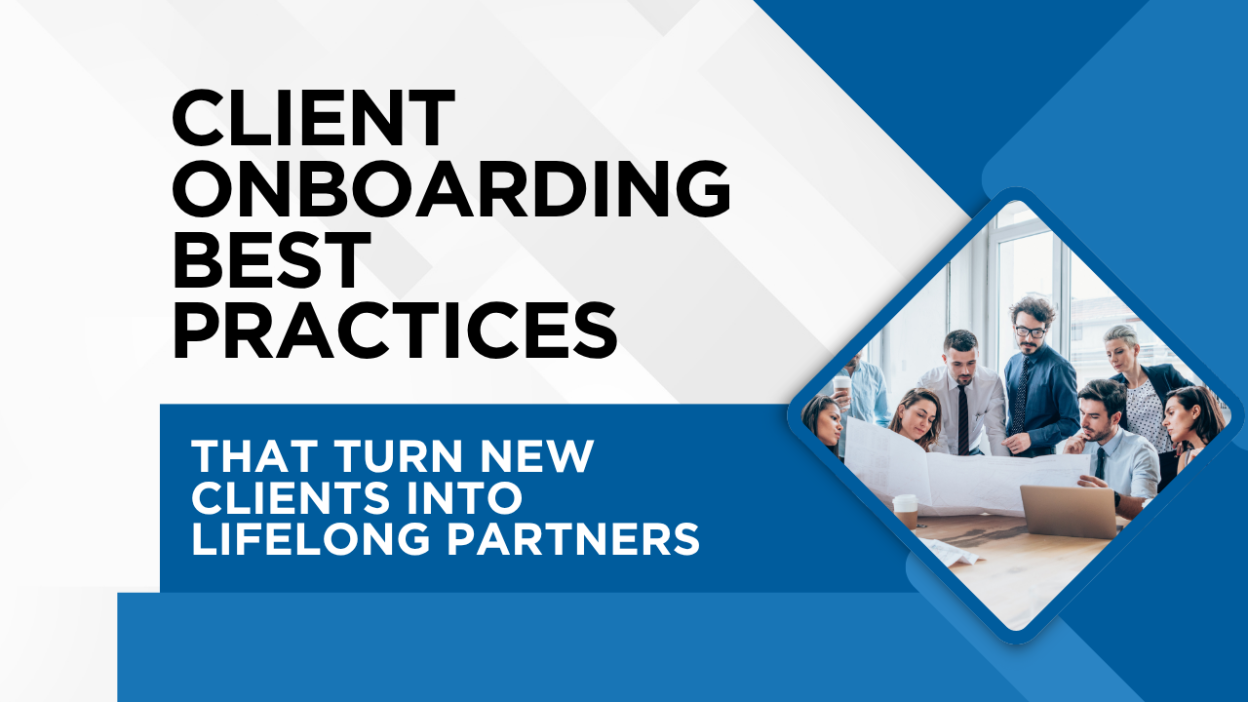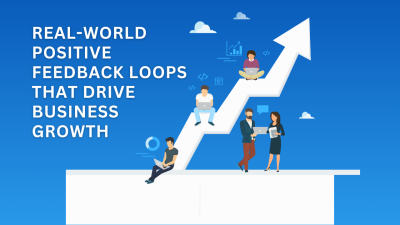In today’s fast-moving digital world, signing a client is just the beginning. What truly sets successful businesses apart is what happens after the contract is signed. That’s where Client Onboarding Best Practices come in, turning a great first impression into long-term trust, loyalty, and growth.
As a tech founder leading Qtec Solution Limited for over a decade, I’ve had the privilege of working with a wide range of clients, from fast-growing startups to global enterprises. One thing I’ve learned? When onboarding is done right, everything else becomes easier. Communication flows better. Projects run smoother. And clients stick around longer.
Client onboarding isn’t just a process. It’s your chance to build a solid foundation, align expectations, and show clients they’re in capable hands. Whether you’re a service provider, a SaaS company, or a digital agency, having a thoughtful, well-designed onboarding strategy is no longer optional. It’s essential.
In this blog, I’ll walk you through the Client Onboarding Best Practices we’ve refined over the years. Practical, proven steps that can turn new clients into lifelong partners. Let’s dive in.
Table of Contents
Understand the Psychology of New Clients
I’ve worked with enough clients over the years to know those first few days are everything. When someone signs on, they’re not just excited. They’re also unsure. They’re hopeful, but they’re watching closely. That’s why Client Onboarding Best Practices start with understanding what’s going on in their head.
Trust window:
The first 7–10 days shape how the client will feel for the rest of the project. Show up early. Show up clearly. That window closes fast and I’ve learned it’s when trust is either built or lost.
Clarity over chaos:
The best way to lose a client’s confidence? Confuse them. I always lay out the next steps in simple language. No jargon, no fluff. When clients understand what’s happening, they stay calm and engaged.
Warmth before tools:
Instead of jumping into dashboards and deliverables, I recommend starting with a simple human connection. A warm message. A thoughtful email. It sets the tone before the “work” kicks in.
Short welcome video:
I send a 1–2 minute personal video to say hello and outline what comes next. It makes onboarding feel personal and real—not like they’ve been dropped into another automated funnel.
Consistency builds confidence:
Even simple updates like “Just a quick heads-up—we’re on track!” go a long way. If clients hear from you before they have to ask, they relax. They trust.
Connection over perfection:
I’ve learned that clients don’t expect you to be perfect, they just want to know you’re present. Be human. Be responsive. That’s more powerful than any fancy UI.
Treat it like a first date:
You’re setting the tone for the entire relationship. Ask questions. Listen closely. Make the client feel seen. When they feel heard, they stick around.
If you can meet clients where they are, mentally and emotionally, Client Onboarding Best Practices become a natural, human-first process. That’s how partnerships begin.
Create a Warm, Human Welcome Experience
Onboarding doesn’t have to feel cold or mechanical. In fact, the most lasting client relationships I’ve built at Qtec Solution Limited began with a warm, thoughtful welcome. Automation can help with flow, but Client Onboarding Best Practices should always prioritize connection over convenience.
People over processes:
I use tools to streamline steps, but I never let automation replace a real conversation. A short voice note, a quick video message, small gestures, big impact.
Introduce humans, not just tools:
Instead of sending a Notion link and calling it a day, I introduce the actual team. Who they’ll be working with, what they do, and even fun facts. It puts faces to the names and makes the relationship feel real.
Share your “why”:
Clients don’t just care what you do, they care why you do it. I love sharing a short message about our mission, our passion for building great tech, and why we care about their success too.
Set expectations with empathy:
I include a simple doc or Loom video titled “Here’s what it’s like to work with us.” It walks them through how we communicate, what we value, and what to expect in a way that’s friendly and clear, not corporate and stiff.
Human-first experience:
This phase isn’t about impressing with complexity, it’s about connection. If a client feels welcomed, understood, and excited in week one, you’ve already laid the foundation for trust.
When you focus on warmth from the start, Client Onboarding Best Practices become more than just checklists. They become the start of something meaningful.
Set Crystal Clear Expectations from Day One
One thing I’ve learned after working with dozens of clients is this: confusion kills confidence. That’s why one of my golden Client Onboarding Best Practices is setting expectations early. Clear, simple, and mutual.
Scope, timelines, and deliverables—no guesswork:
I lay everything out in plain language. What we’ll deliver, when, and how. No fluff, no ambiguity. Clients don’t want to read between the lines, they want to feel in control.
Define boundaries upfront:
I’m super clear about when we’re available, how feedback loops work, and when to expect updates. This isn’t just for us, it gives clients peace of mind. They know exactly what to expect and when.
Use the right tools to support clarity:
I use welcome packets, simple project dashboards, and sometimes even lightweight service-level agreements. These tools aren’t meant to overwhelm, they exist to reduce questions and keep everyone aligned.
Show them what success looks like (on both sides):
I always take a moment to share what success looks like from our perspective and ask what it means for them. This keeps the whole journey focused and collaborative. We’re not just delivering a product; we’re building towards a shared outcome.
Set clear expectations early and revisit them often. When everyone knows the rules of the game, Client Onboarding Best Practices become your secret weapon for smooth, confident, and high-trust collaborations.
Design a Step-by-Step Onboarding Journey
One of the most overlooked Client Onboarding Best Practices is giving the journey structure. Not just for you but for the client. When they can see progress and know what’s coming next, they feel calm, confident, and excited to move forward.
Break it into micro-stages:
I don’t treat onboarding like a single event. I break it down—Discovery → Kickoff → Strategy Alignment → First Delivery → Feedback Loop. Each stage has a clear purpose and a win to celebrate.
Create milestone moments:
I like to make progress feel real. A signed brief, first wireframe, or a simple shared roadmap, these become small wins. When the client hits milestones, they feel involved and invested.
Use a clear checklist or timeline:
I always share a visual onboarding guide. Just a one-pager that says: here’s where we are, here’s what’s next. It kills confusion and helps both sides stay on track.
Let them feel early progress:
Even if it’s small like a welcome message or first draft they should feel like things are moving. I’ve found that early wins reduce second-guessing and boost client confidence.
A clear onboarding journey doesn’t just guide your team, it reassures your client. When you map the process with care, Client Onboarding Best Practices evolve into a client experience they’ll remember (and refer).
Make Communication Easy, Predictable, and Personal
If there’s one thing I’ve learned after leading projects at Qtec Solution Limited, it’s that smooth communication builds unshakable trust. One of the most powerful Client Onboarding Best Practices is removing guesswork from how and when you talk to your clients.
Pick one main channel and stick to it:
I let the client choose what’s easiest, email, Slack, ClickUp, or whatever they’re already comfortable with. Then we keep all important updates in one place. No scattered messages, no confusion.
Set clear response expectations:
I tell them upfront when we reply (within 24 hours, Monday–Friday). It saves them from wondering and builds confidence that we’re dependable and on the ball.
Make updates feel personal:
Instead of just sending tasks or tickets, I like to write quick notes like “Hey [Client Name], here’s what we got done this week and what’s coming next.” It feels human, not robotic.
Schedule weekly check-ins:
Don’t wait for clients to chase you. I lock in a recurring 15–30 min check-in to align, share wins, and clear blockers. These calls keep everything transparent and collaborative.
Clear, friendly, and predictable communication takes so much pressure off the relationship. When clients know how to reach you and what to expect, Client Onboarding Best Practices turn into client peace of mind.
Provide Early Wins That Build Confidence
One of my favorite Client Onboarding Best Practices is delivering quick wins early in the journey. Clients want to feel momentum, not just promises. When they see value fast, it builds instant confidence and trust.
Deliver something valuable—fast:
I always aim to share a small but meaningful deliverable within the first 7–10 days. It could be a quick UI sketch, a rough roadmap, or a light tech audit. It says, “We’re already moving.”
Show, don’t just tell:
I’ve found that even a simple visual like a progress snapshot or a flow diagram can go a long way. It helps the client see that traction is happening, even if the end product is still weeks away.
Reinforce the decision:
This is where I gently remind them: “You made the right choice hiring us.” Not with words alone, but with results. When they feel that early validation, their buy-in deepens.
Make it real, not perfect:
The early win doesn’t have to be final or polished. It just needs to feel thoughtful and intentional. I focus on creating something useful that opens up a productive conversation.
When you deliver value early, you shift the client mindset from “Let’s see how this goes” to “I’m so glad we chose them.” That’s the power of early wins in Client Onboarding Best Practices.
Ask for Feedback During the Process
One of the most underrated Client Onboarding Best Practices is checking in before the project is “done.” I’ve learned that asking for feedback early not only improves the work, it strengthens the relationship.
Mid-onboarding check-in:
Somewhere around week 2, I ask a simple question: “How’s this feeling so far?” It opens the door to honest input before small issues turn into big ones.
Adapt based on what they say:
If they’re feeling unclear or overwhelmed, I take that seriously. I adjust the pace, revisit expectations, or clarify steps. Feedback is fuel, it helps me deliver better.
Make it a two-way street:
This isn’t just about fixing problems. It’s about saying, “We’re in this together.” I’ve found that asking for input shows humility, builds trust, and gives clients a sense of ownership.
When clients feel heard early in the process, they’re more engaged, more trusting, and way more excited about the work ahead. That’s why feedback loops are essential to effective Client Onboarding Best Practices.
Build a Long-Term Relationship Framework (From Day 1)
One of the smartest Client Onboarding Best Practices I’ve picked up over the years is planting the seed for a long-term partnership right from the start. It’s not just about this project. It’s about where we’re going together.
Talk about the future early:
During onboarding, I casually introduce how we support clients post-launch. Whether through retainers, scaling support, or ongoing optimization. It helps them see that we’re built for the long game.
Ask about their vision:
I always ask something like, “What does success look like in 6–12 months for you?” It shifts the convo from short-term deliverables to long-term outcomes and gets them thinking beyond just the now.
Set the tone for partnership:
I make it clear from day one: “We’re not just here to deliver and disappear. We’re here to grow with you.” That one line shifts their view of us from vendor to value partner.
When clients see that you’re thinking long-term from the beginning, it builds trust, loyalty, and a deeper connection. That’s what makes this one of the most powerful Client Onboarding Best Practices you can apply.
Common Mistakes That Kill Great Client Relationships Early
Even with the best intentions, small missteps during onboarding can create big cracks in the relationship. After years in the industry, I’ve seen these mistakes derail promising projects before they even get started. That’s why knowing what not to do is just as important as mastering Client Onboarding Best Practices.
Overpromising in the beginning:
Trying to impress by saying “yes” to everything might feel good short-term but it usually backfires. I’ve learned to set realistic expectations and wow them with delivery instead.
Not giving the client a voice:
If you do all the talking and none of the listening, clients feel sidelined. I always make space for their input, questions, and concerns especially early on.
Rushing the setup phase:
Skipping proper discovery or jumping into tasks without context leads to confusion. I slow down onboarding just enough to get alignment first, it saves time (and headaches) later.
Relying too heavily on automation:
Tools are great but they can’t replace real human connection. I make sure automation supports the process, not replaces it. A personalized message always beats a templated one.
Avoiding these common mistakes isn’t just damage control, it’s foundational to building trust. When you lead with intention and clarity, Client Onboarding Best Practices become your client retention strategy.
Tools & Templates That Save Time Without Losing the Human Touch
One thing I’ve learned over the years is that great tools don’t replace relationships, they support them. When used thoughtfully, they can streamline onboarding without making it feel cold or robotic. That balance is key to modern Client Onboarding Best Practices.
Use tools that organize, not overwhelm:
I personally use Notion for welcome kits and shared roadmaps, Trello for task visibility, and Dubsado for contracts and automated emails. They help us stay clear and consistent without drowning the client in dashboards.
Share your onboarding flow:
I keep a simple onboarding template that outlines our key stages, from Kickoff to First Delivery. I share it with clients so they can follow along, know what’s coming next, and stay looped in. (Bonus: it saves my team hours every month.)
Automate the busy work, not the relationship:
Automation is great for reminders, follow-ups, and scheduling. But the human stuff like personal check-ins, custom updates, or “just thinking of you” emails still comes from me. Clients can feel the difference.
When your tools work with your voice instead of replacing it, Client Onboarding Best Practices feel smooth, smart, and deeply personal. That’s the sweet spot.
Conclusion
After more than a decade in the tech space and working with clients of all shapes and sizes, one thing is crystal clear, Client Onboarding Best Practices are not just a formality. They’re the driving force behind building lasting partnerships.
When you lead with clarity, warmth, structure, and empathy, you don’t just start a project, you build trust. And trust is what turns new clients into lifelong partners.
If you’re serious about growth, retention, and client happiness, it’s time to elevate your onboarding process. Because when done right, Client Onboarding Best Practices don’t just improve the beginning, they transform the entire journey.
Frequently Asked Questions
1. What are Client Onboarding Best Practices for a software development company?
Client Onboarding Best Practices for a software development company include setting clear expectations, assigning a dedicated point of contact, using structured onboarding stages, and delivering early wins to build client trust.
2. Why are Client Onboarding Best Practices important for long-term client relationships?
Client Onboarding Best Practices are important because they establish trust, improve communication, and align goals early, setting the foundation for long-term, successful partnerships.
3. How can I implement Client Onboarding Best Practices without overwhelming my team?
You can implement Client Onboarding Best Practices by using simple templates, automating repetitive tasks, and focusing on human connection, keeping the process efficient but personal.
4. What tools support effective Client Onboarding Best Practices?
Tools like Notion, Trello, Dubsado, and Slack support Client Onboarding Best Practices by keeping communication, tasks, and documents organized and easy to access for both teams and clients.
5. When should I start applying Client Onboarding Best Practices in my workflow?
You should start applying Client Onboarding Best Practices immediately after a client signs on to ensure a smooth transition, reduce confusion, and show that you’re prepared and professional from day one.




